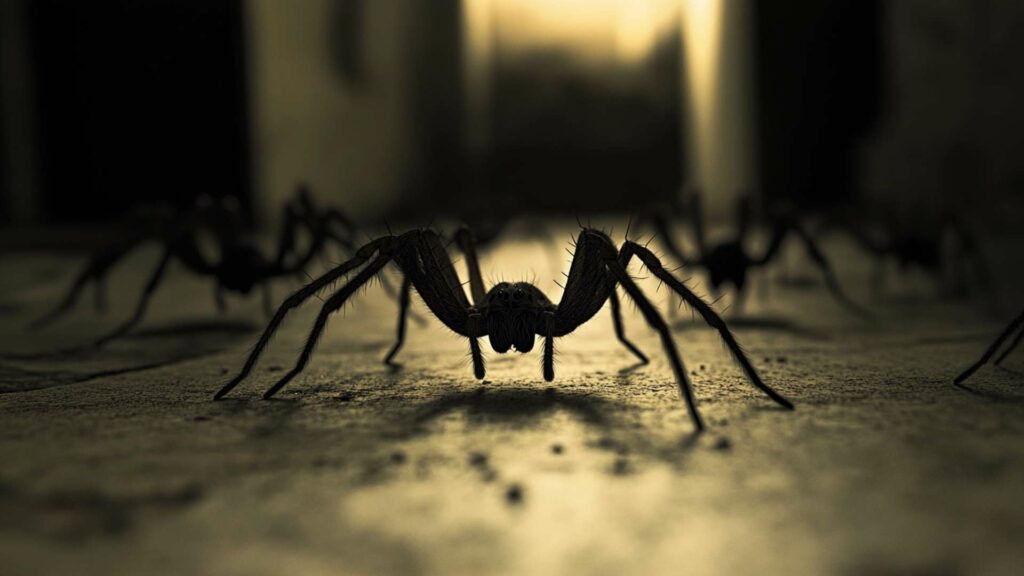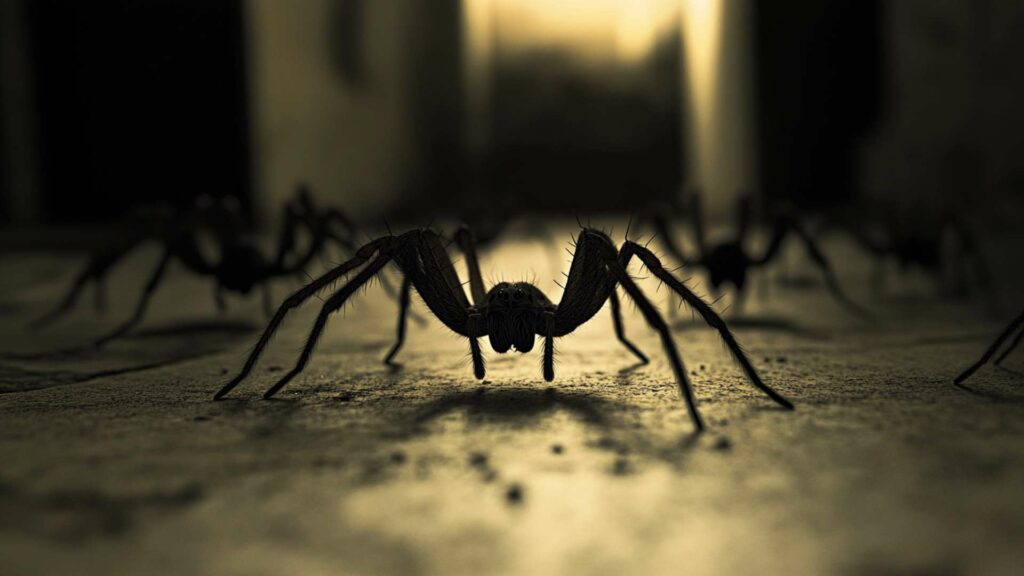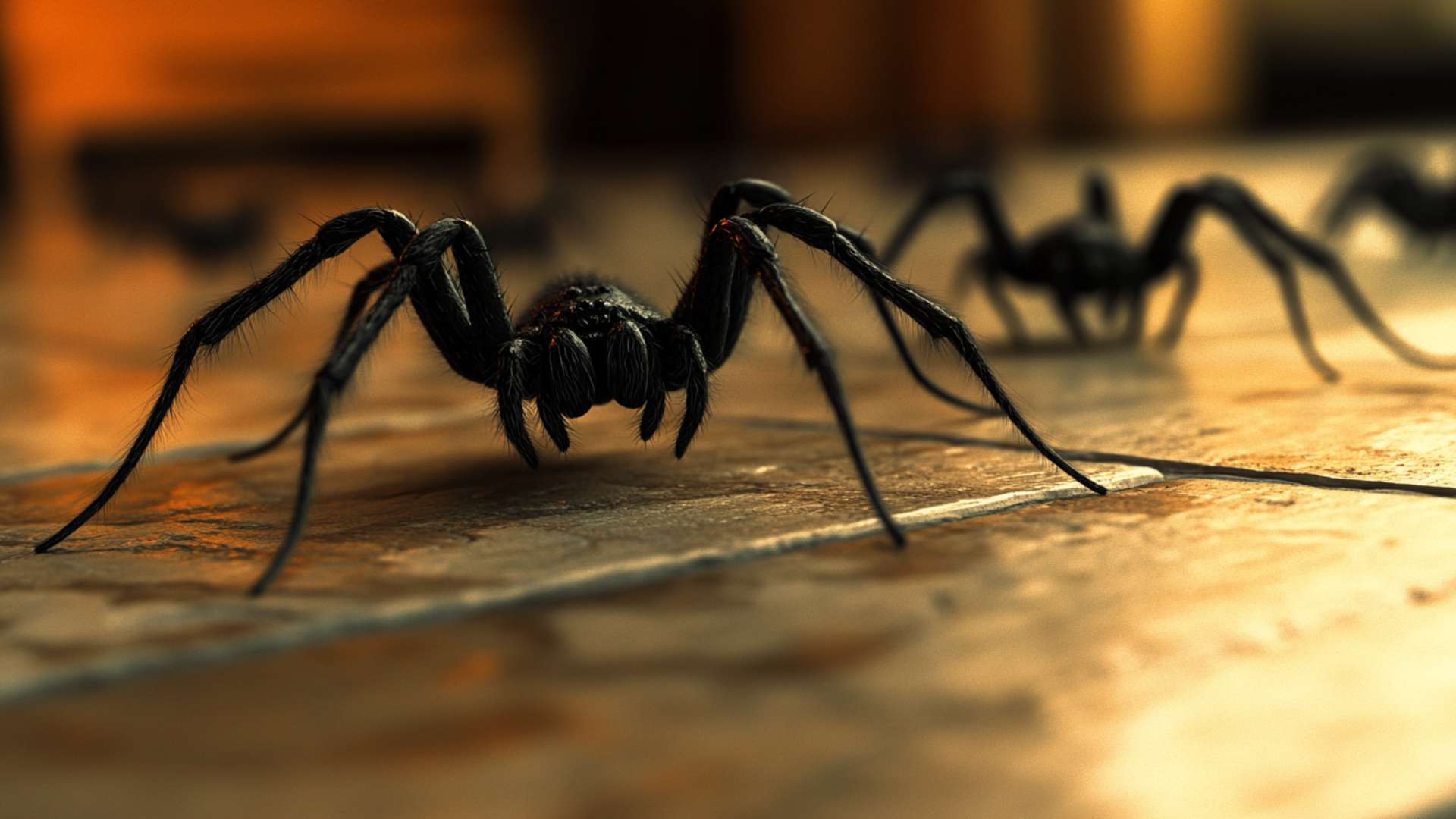Spiders, the eight-legged wonders of the arachnid world, have long captured our curiosity with their intricate webs, delicate yet formidable bodies, and astonishing abilities. These remarkable creatures inhabit diverse environments across the globe, from the deepest rainforests to the quiet corners of our homes. While we marvel at their spinning skills and predatory prowess, there’s one question that often arises: Can spiders smell?
Before diving into this captivating inquiry given spider name, let’s take a moment to appreciate the extraordinary characteristics that define spiders. With over 48,000 known species, these arthropods exhibit an incredible array of shapes and sizes.
From minuscule jumping spiders to giant tarantulas that send shivers down your spine, each spider species possesses unique adaptations tailored to their given location and lifestyle. Beyond their physical attributes, spiders possess an impressive array of sensory mechanisms that enable them to thrive in a complex world.
Their ability to sense vibrations through specialized receptors located on their legs alerts them to potential predators or prey movements nearby. These spider senses extend beyond detecting vibrations; they encompass an assortment of other sensory capabilities as well.
Spider Sensory System
Primary Sensory Organs: Eyes and Legs
Spiders possess a remarkable array of sensory organs, mainly concentrated in their eyes and legs. While their vision may not be as acute as that of humans, spiders can certainly perceive movement and distinguish between light and dark.
Most spiders have multiple sets of eyes, with some species boasting up to eight. These eyes are strategically positioned to provide a wide field of vision, enabling spiders to detect prey or potential threats from various angles.
However, it is important to note that not all spider species rely solely on their vision. Many spiders also heavily rely on their legs as sensory organs.
Each leg is covered in thousands of fine hairs called setae which act as receptors for touch and vibration. These hairs are so sensitive that they allow spiders to detect even the slightest disturbances in their surroundings, such as the movement of their legs touching an insect trapped in their web or the subtle vibrations produced by approaching predators.
Senses for Navigation and Hunting
Spiders utilize their senses to navigate through complex environments and efficiently hunt for prey. The combination of visual cues from their eyes and tactile feedback from their legs allows them to explore and move with exceptional precision. For instance, jumping spiders have exceptional vision compared to other spider species; they use it not only for hunting but also for courtship displays.
When hunting, spiders rely on both visual cues provided by moving prey caught in their webs and the vibrations transmitted through the web strands when struggling insects attempt to break free. This combination enables them to quickly home in on trapped prey before delivering a deadly bite.
Additionally, spider senses extend beyond sight and touch alone; they can also perceive chemical signals present in the environment. This ability plays a crucial role in locating potential mates or identifying suitable habitats where food sources might be abundant.
Overall, by utilizing a variety of sensory inputs including vision, touch, and chemical cues, spiders have evolved a sophisticated sensory system that aids in their survival and success as skilled predators. Note: Since it is an informal style article, the use of HTML header tags is merely for organizational purposes and will not be visible in the final text.
The Role of Chemical Signals

Unveiling the Secret Language of Spiders
When it comes to spider behavior, there’s more than meets the eye. While their eight-legged form may appear intimidating, spiders rely heavily on chemical signals to navigate their world and communicate with one another.
Just like how humans use spoken language to convey messages, these fascinating arachnids have developed a secret language based on chemical cues. This intricate system plays a crucial role in various aspects of spider life, from hunting prey to finding mates.
Pheromones: The Messaging Agents of Spiders
Among the vast array of chemical signals utilized by spiders, pheromones take center stage. Pheromones are specialized substances emitted by animals and insects that trigger specific responses in others of the same species.
In the case of spiders, pheromones serve as potent messengers for communication and play a vital role in their survival strategies. For instance, when it comes to finding potential mates, male spiders produce pheromones that waft through the air or are deposited onto surfaces to attract females from afar.
These signals act as olfactory love letters from the jumping spider that announces their presence and availability. Female spiders respond by releasing their own unique blend of enticing pheromones into the environment, further facilitating this intricate courtship dance.
A Multitude of Chemical Conversations
Chemical signals go beyond just romantic encounters for these eight-legged creatures; they also communicate information about territory boundaries and potential predators. By strategically placing scent marks throughout their domains, spiders create invisible barriers that warn other individuals from encroaching upon their particular area.
Moreover, chemical cues play a critical role in detecting prey as well. When insects unwittingly wander into a spider’s web or vicinity, they often leave behind traces that carry distinct odors signifying vulnerability.
Through their highly sensitive sensory organs located on their legs, spiders can detect these smells and swiftly respond to secure a meal. Intriguingly, some species of spiders even use pheromones to deceive prey.
Wolf spiders, known for their fierce hunting abilities, emit chemical signals that mimic the scent of harmless insects or other potential mates. When unsuspecting prey falls victim to this ruse, the spider pounces with lightning speed.
Chemical signals and pheromones play a vital role in spider behavior and communication. These intricate systems allow spiders to navigate their environment, find mates, defend territories, and locate prey.
By harnessing the power of smell through their specialized sensory organs and detecting specific scents in their surroundings, these fascinating creatures have mastered the art of survival in a world where chemical cues reign supreme. So next time you encounter a spider weaving its web or scurrying along its eight legs, remember that beneath its seemingly alien appearance lies a complex system of chemical conversations unfolding right before your eyes.
Spider Olfaction: Do They Have a Sense of Smell?

Scenting the Invisible: Unraveling Spider Olfaction
When we think of animal senses, the ability to smell is often associated with mammals. However, many spiders possess a remarkable capacity to detect odors in their environment.
Scientific research has delved into the olfaction abilities of these eight-legged creatures, revealing fascinating insights into how they perceive the world around them. It turns out that spiders do have a sense of smell, albeit in a unique and remarkable way.
Sniffing Out Clues: Studies on Spider Olfaction Abilities
Numerous studies have shed light on the olfactory capabilities of spiders, providing evidence that they are indeed capable of detecting odors. For instance, researchers have found that certain types of spiders can sense chemical cues released by their prey or potential mates from considerable distances. These chemical signals can travel through the air or be picked up from surfaces such as leaves or web silk.
In one study conducted on orb-weaving spiders, it was observed that they could detect and differentiate between different scents present in their environment. The researchers concluded that these arachnids rely heavily on chemical cues to navigate their surroundings and find food sources efficiently.
Fragrant Threads: Odor Detection in Spider Sensory System
But how exactly do spiders detect these odorous signals? Their sensory system plays a crucial role in this process. While many spiders have poor vision despite their eight eyes, they make up for it with specialized sensory organs located primarily on their legs.
The front legs of most spider species are equipped with tiny hair-like structures called trichobothria, which function as highly sensitive taste receptors and odor detectors. These tiny hairs are capable of perceiving even subtle changes in air pressure caused by odor molecules nearby.
When a spider encounters an odor, these specialized hairs on its legs pick up the scent molecules in the air and transmit that information to the spider’s brain. In this way, spiders can follow scent trails emanating from their prey or potential mates, enhancing their hunting and reproductive success.
Scientific studies have provided convincing evidence that spiders do possess a sense of smell. Their ability to detect and differentiate odors plays a crucial role in various aspects of their lives, from finding food to locating potential mates.
Through the remarkable sensory adaptations present in their legs, spiders navigate an invisible world of scents that eludes our human senses. Despite their often misunderstood reputation, spiders continue to astound us with the intricacies of their sensory abilities.
How Spiders Detect Odors

Anatomy of a Spider’s Olfactory System
When it comes to detecting odors, spiders have a remarkable sensory system that helps them navigate their world. To understand how they do this, we need to take a closer look at the anatomy of a spider’s olfactory system. Unlike humans who rely on their noses, spiders use specialized hairs and receptors located on their legs to pick up scents in their environment.
Structure and Function of Chemoreceptors in Spider Legs
Spiders have evolved an ingenious way to detect odors through the use of chemoreceptors located on their legs. These fine hairs act as sensors that physically touch chemical signals present in the air or surrounding surfaces.
This allows them to detect and analyze pheromones released by potential mates or chemical cues left by prey. The chemoreceptors found on spider legs are highly sensitive structures capable of detecting even minute traces of odor molecules in the air or on surfaces.
They can also differentiate between various scents, helping spiders identify potential food sources or avoid predators. The information gathered by these smell receptors is then transmitted through neural pathways to the spider’s brain, enabling them to make sense of the olfactory information they receive.
The Role of Specialized Hairs (Trichobothria) in Odor Detection
In addition to chemoreceptors, spiders also possess specialized hairs called trichobothria that play a crucial role in odor detection. Trichobothria are tiny, hair-like structures found on different body parts of a spider’s body, including their legs and abdomen.
These hairs are incredibly sensitive to vibrations caused by nearby movement or airflow disturbances. When it comes to detecting odors, trichobothria act as an additional tool for other spiders too.
Not only can they pick up chemicals from the air, but they can also sense movement or vibrations associated with prey. This combination of chemical and tactile information helps spiders in hunting, as they can rely on these specialized hairs to locate potential meals.
Spiders have a unique and fascinating way of detecting odors. Their olfactory system relies on chemoreceptors located on their legs that physically touch chemical signals, allowing them to detect scents emitted by potential mates or prey.
Additionally, specialized hairs known as trichobothria play a vital role in odor detection by sensing both chemical cues and vibrations associated with movement. These intricacies of spider olfaction highlight their remarkable ability to navigate their environment and survive in the wild.
Types of Odors Spiders Can Detect
Spiders, despite their small size, possess a remarkable ability to detect various different types of odors in their environment. They rely on this acute sense to locate prey, recognize potential mates, and navigate their surroundings.
Studies have shown that certain types of odors can either attract or repel spiders. Let’s delve into two fascinating aspects of spider olfaction: odors that attract hunting spiders and pheromones emitted by potential mates.
Odors that Attract Hunting Spiders
A plethora of research has been conducted to understand the specific odors that attract hunting spiders, such as wolf spiders and jumping spiders. These predators have evolved an exceptional ability to detect chemical signals emitted by their prey.
It has been found that certain scents emitted by other insects act as potent attractants for these cunning hunters. For instance, studies have shown that the odor produced by wounded insects or the pheromones released by trapped prey can trigger a strong response in hunting spiders and female mosquitoes.
This enables them to hone in on potential food sources with pinpoint accuracy. Their acute sensitivity to such smells allows them to find shelter and rely less on vision alone and increases their chances of securing a meal.
Pheromones Emitted by Potential Mates
The world of spider courtship is not devoid of chemical signals either. Male spiders utilize pheromones as a means of communication with females during the mating process.
These special scents are emitted from specialized glands located on different parts of the male’s body. Research has demonstrated how male spiders release pheromones into the air or deposit them onto silk threads when trying to attract females from a distance or direct other scents from them towards their location.
Female spiders, equipped with chemoreceptors specifically tuned into these pheromones, can detect and follow these scent trails to find potential mates. The intricate dance of chemical signals allows spiders to navigate the complex world of spider romance.
Spider Species Variation in Olfaction Abilities
From the tiny jumping spiders to the larger wolf spiders, different species of spiders exhibit varying olfaction capabilities. Their unique adaptations enable them to thrive in various habitats and fulfill specific ecological roles. Let’s explore some differences in olfaction abilities across different spider species and highlight examples of highly specialized odor-detecting spiders.
Differences in Olfaction Capabilities
While all spiders have a general sense of smell, certain species have evolved more heightened olfactory systems compared to others. For example, wolf spiders possess an extraordinary ability to detect subtle scents over considerable distances due to their elongated legs equipped with chemoreceptors known as trichobothria. In contrast, other spider species may rely more heavily on physically touching their environment or using other senses for navigation and prey detection.
Highly Specialized Odor-Detecting Spiders
In the realm of specialized odor-detecting spiders, one notable example is the orb-weaver spider. These remarkable arachnids construct intricate sticky webs that not only serve as traps but also capture airborne smells.
The sticky silk threads collect odor particles from their surroundings, allowing orb-weaver spiders to detect prey or even potential mates from a distance. Another fascinating group is the male nursery web spiders (Pisaura mirabilis), which display a peculiar behavior linked to scent detection.
These males gift-wrap their food offerings for females with silk and pheromones as part of courtship rituals. By carefully manipulating odors emitted by both food and themselves, they hope to improve their chances of successful mating encounters.
Spider Smell vs. Human Smell

Spider olfaction differs significantly from human olfaction, with each sense serving different functions and operating on distinct principles. Let’s explore the key differences between spider smell and human smell to gain a deeper understanding of how these sensory systems vary.
Comparing Spider Olfaction with Human Olfaction
The main difference lies in the anatomical structures involved. Humans primarily rely on their nose and olfactory receptors located within the nasal passages to detect smells.
Conversely, spiders have chemoreceptors located not only in their main eyes but also on their legs, which play a vital role in detecting odors. In addition, while humans may detect thousands of different smells due to an extensive range of specific receptors, spiders have fewer receptor types but are highly tuned into specific odor molecules that are relevant to their survival needs.
How Spider Sense Differs from Our Perception of Smell
A notable difference is that spider senses often operate through detection of air pressure changes caused by odor molecules moving through the environment. This allows spiders to locate and follow scent trails or detect prey in the air more effectively. In contrast, humans primarily rely on chemical binding between odor molecules and specific receptors within the nasal passages.
Furthermore, spiders can sense extremely low concentrations of certain odors due to their highly sensitive chemoreceptors located on their legs. This heightened sensitivity enables them to navigate complex environments and detect even faint signals that may go unnoticed by humans.
Implications and Applications
The study of spider olfaction has significant implications for various fields, including pest control strategies, biomimicry-inspired technologies, and ecological research. Understanding which odors attract or repel spiders can aid in developing more effective pest management techniques. By manipulating certain scents, it may be possible to discourage spiders from inhabiting specific areas or to develop attractants for targeted removal.
Furthermore, the unique sensory capabilities of spiders can inspire the design of innovative technologies. For example, mimicking their ability to detect airborne smells and navigate through complex environments could lead to the development of enhanced sensors for detecting hazardous substances or guiding autonomous robots in challenging terrains.
Ecologically speaking, studying spider olfaction provides insights into the intricate web of interactions within ecosystems. The interplay between chemical signals and spider behavior influences prey-predator dynamics, mating rituals, and even pollination processes involving spiders as accidental flower visitors.
Conclusion
The world of spider olfaction is a fascinating realm where these arachnids exhibit remarkable abilities in detecting odors. Whether it’s attracting prey with enticing scents or utilizing pheromones for courtship communication, spiders have evolved specialized adaptations that enable them to exploit their environment effectively. By understanding the differences between spider smell and human smell, we gain insight into the diversity and complexity of sensory systems across species.
This knowledge opens doors to practical applications in pest control strategies, technological advancements inspired by spider senses, and ecological research that unravels intricate webs of interconnectedness in nature. Ultimately, exploring the mysteries of how spiders detect smells not only unveils their incredible capabilities but also reinforces our appreciation for the wonders found within our natural world.
Master Spider Control with D-Termination: Las Vegas’ Foremost Pest Control Choice!

If you’re troubled by spiders in your Las Vegas property, D-Termination has the remedy. Our expert team excels in eradicating spider infestations, restoring peace and tranquility to your space. Bid farewell to spiders—opt for D-Termination’s effective pest control today!
Reach out to us at 702-919-6310 or visit dtermination.com to schedule your spider control service and regain your space from these unwelcome pests.
Frequently Asked Questions:
Spiders often dislike strong scents like peppermint or vinegar.
Spiders are attracted to the scent of prey and pheromones.
Spiders have a sense of smell but it varies by species.
Spiders cannot detect fear in humans through scent.








